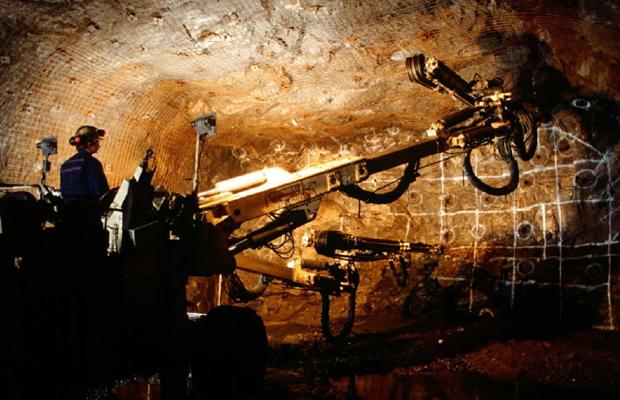Selection & installation of Group I Ex Equipments
Posted by: "B K Gupta" ifmaconsultant@yahoo.com ifmaconsultant
Sun May 25, 2008 4:01 am (PDT)
Dear Members,
IEC does not has any code for selection & installation of Group I ExEquipments unlike 60079-14 for Group II equipments. I have drafted somepoints.
Members are requested to comment & send their inputs.RegardsB K GUPTAEx-PROTECTA/ TECEX Foundationwww.exprotecta. com / <http://www.exprotec ta.com/> www.tecexfoundation.org
DRAFT POINTS------------ --------- --------- --------- --------- --------- -\------------ --------- ----
1.0 PRESENCE OF GASES IN COAL MINESFiredamp is a mixture of naturally occurring flammable gases that formsthe most common potentially explosive gas in mines. It is commonlypredominantly methane and burns or explodes at concentrations between 5%and 15% in air. However, other flammable gases that can occur and mayneed taking into account include:• Mixtures of higher hydrocarbon gases in the vicinity of oilbearing strata;• Hydrogen released during battery charging and by spontaneouscombustion (water gas) – explosive limits are between 4% and 74% byvolume in air;• Carbon Monoxide – explosive limits between 12.5% and 74% byvolume in air.
2.0 AREA CLASSIFICATION:Group II area is divided into zones as per severity of hazard. There isno guideline for such divisions within Group I. However, Indian Standardclassifies coal mines based on rate of emission of gas & percentage offlammable gas in hazardous area formed by gas emission. This guidelinemay be used for zone classification of coal mines as under:SlDegree of MineRate of Gas Emission in M3/ Ton of Coal Produced% of Methane (firedamp) in hazardous areaProposed ZoneRemarks1IUpto 10<=0.112Similar to Zone 2 of Group II2II1 to 10>0.111Similar to Zone 1 of Group II3III>10Not Specified10Similar to Zone 1 or Zone 0 of Group IIThis will facilitate use of Ex equipments other than Flameproof (Ex d) &Intrinsically Safe (Ex i), which are not being presently used as isbeing done in Group II area. This is logical to use equipment havingdifferent level of protection in area based on severity of hazard.It should be appreciated that % of Methane (firedamp) in case of Mine ofDegree I & II is normally much below 1.25%, which is target level forsounding alarm. Even 1.25% is much below LEL of 5% thus these categoriesof mines are quite safe. Degree III mines do call for greater safetymeasures. However, here also necessary action pursuant to sounding ofalarm at 1.25% Methane (firedamp) can supplement safety levels.A consideration also needs to be given to fact that within a particulardegree of mine large areas may not pose even the degree of hazardanticipated at working face, which may be classified as Zone of lowerhazard even within same mine.
This is akin to extent of Zone as in GroupII, where all the Zones are present with geometry defined based onsource of release. In case of Coal Mines working face becomes source ofrelease. This needs very careful consideration due to fact that coalmines are not like fixed installation but working face keeps shifting asper development. At same time this point needs consideration asdeployment cost of equipments will be considerably reduced due to mostjudicious use of Ex equipments of almost all type of Ex protection.
3.0 CATEGORY OF EQUIPMENT:ATEX divides Ex mining equipments in M1 & M2, Category M2 also coversnon electrical equipments. However, exact co-relation of Category M1 &M2 with IEC / EN 60079 Series of code is not clear in HSE Guidelines.IEC 60079-0 divides Group II equipments as IIA, IIB & IIC for Ex d & Exi based on degree of hazard. Methane (firedamp) is having IgnitionTemperature of 595ËšC thus even T1 Class equipment are suitable forGroup I. This code also considers hazard from coal dust in addition tomethane (firedamp) and accordingly temperature classification T1 is nomore applicable to Group I but maximum surface temperature has beenspecified as under:1. 150ËšC on any surface where coal dust can form a layer.2. 450ËšC where coal dust is not expected to form a layer.This can become a logical ground for subdivision of Group I Exequipments based on difference in hazard/ safety level. We can thussubdivide Ex equipments for Group I as IA & IB to signify IA asequipments on which coal dust is not expected to form a layer and IB assuch equipments on which dust can form a layer.
4.0 MONITORING OF HAZARDOUS AREA:Indian Standard prescribes monitoring of methane (Limit - 1.25%) &Carbon Monoxide (Max 5ppm) to sound an audio visual alarm. Furthercourse of action may be specified.Under ATEX directive Equipment of Category M2 is required to bede-energized at 1.25 % methane concentration. However, Category M1equipments are allowed to work.
5.0 SELECTION OF Ex EQUIPMENTS:Based on proposed Zones:Proposed ZoneCoal dust is not expected to form layer on equipmentCoal dust can form layer on equipment* Following Type of protection as individual or combination of two ormore to be allowed10Ex * I AEx * I Bd & i11Ex * I AEx * I Bd, i, e, p, m, q12Ex * I AEx * I Bd, i, e, p, m, q, n







